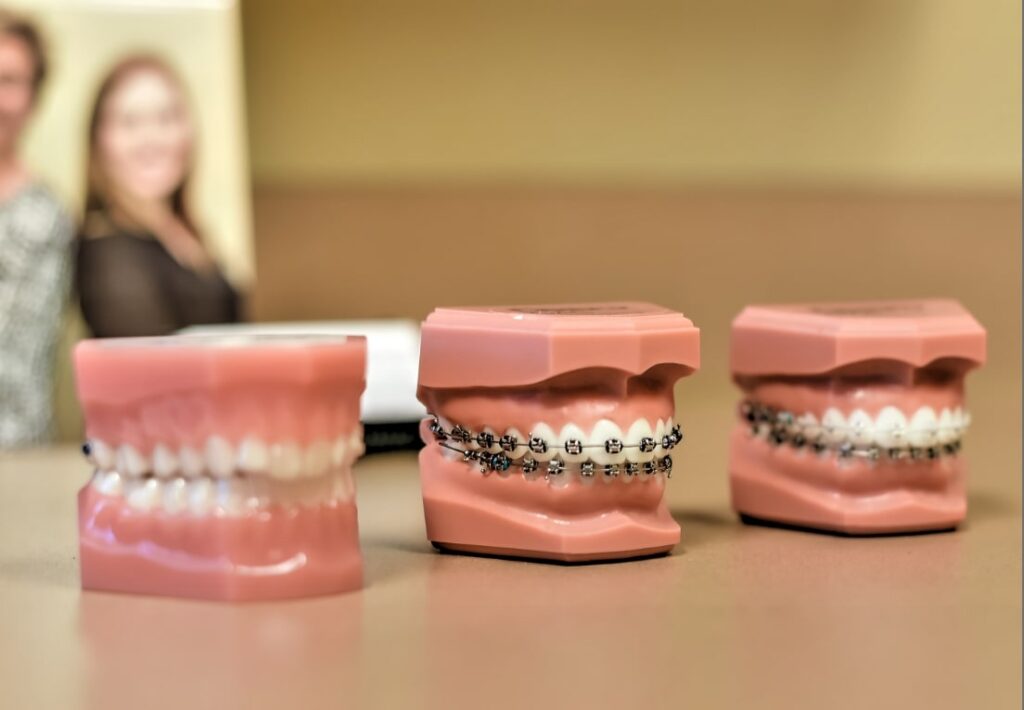Your Guide to Cumming Invisalign: Straightening Teeth with Style and Convenience
Your Guide to Cumming Invisalign: Straightening Teeth with Style and Convenience
Blog Article
Comprehensive Overview to Orthodontics Procedures for Fixing Dental Misalignments
Understanding the intricacies of each procedure, including their systems, benefits, and prospective downsides, is crucial in making informed decisions about one's orthodontic treatment. As we navigate through the comprehensive overview to orthodontic procedures for fixing dental misalignments, the elaborate information of each method will unravel, losing light on the course towards a unified and practical oral placement.
Orthodontic Procedures Summary

Along with clear aligners and typical dental braces, orthodontists may likewise suggest other treatments like headgear, palatal expanders, or retainers to address particular positioning concerns (braces). These treatments are tailored per individual's one-of-a-kind needs and might involve a mix of therapies to accomplish the wanted results. Regular changes and monitoring are critical parts of orthodontic therapy to make sure progress is on track and to make any required alterations along the road. By undertaking orthodontic procedures, individuals can not only accomplish a straighter smile however additionally improve their general dental health and feature.
Typical Dental Braces: How They Work
When thinking about orthodontic treatments for oral misalignments, typical dental braces stand out as a time-tested approach for fixing teeth placing. Conventional dental braces consist of brackets, cables, and bands that function together to use continuous stress on the teeth, gradually relocating them into the wanted alignment.
One trick aspect of exactly how traditional dental braces work is the procedure of bone renovation. As stress is applied to the teeth with the dental braces, the bone surrounding the teeth is reshaped to sustain the new tooth settings. This remodeling is crucial for the long-term security of the fixed placement. Clients will certainly require regular modifications at the orthodontist's workplace to make sure the dental braces continue to apply the proper stress for effective teeth motion.
Unnoticeable Aligners: Benefits And Drawbacks
Unseen aligners supply a very discreet and convenient alternative to conventional braces for fixing dental misalignments. These clear, tailor-made trays are virtually invisible when worn, making them an attractive choice for individuals seeking a much more visually pleasing orthodontic treatment. One of the primary advantages of invisible aligners is their removability, enabling easier upkeep of dental health compared to conventional braces. Patients can remove the aligners prior to consuming or cleaning their teeth, minimizing the danger of food getting stuck in the device and streamlining the cleaning process.

Surgical Orthodontic Options
Surgical interventions in orthodontics present feasible alternatives for addressing intricate oral misalignments that may not be efficiently solved via conventional orthodontic treatments. While conventional dental braces and unseen aligners can fix numerous orthodontic problems, specific cases a dds require surgical treatment to attain optimum outcomes. Surgical orthodontic alternatives are typically recommended for serious malocclusions, significant jaw discrepancies, and instances where the underlying bone structure requires modification to attain appropriate placement.
One usual medical orthodontic procedure is orthognathic surgical treatment, which involves repositioning the jaws to deal with practical issues such as difficulty chewing or talking. This surgery is frequently carried out in collaboration with an orthodontist that aids straighten the teeth prior to and after the procedure. Surgical orthodontics might likewise include treatments to expose impacted teeth, get rid of excess gum cells, or improve the jawbone to produce a more unified face profile.
Before taking into consideration medical orthodontic options, patients undertake a detailed examination to establish the necessity and possible advantages of such treatments. orthodontist. While surgery might seem challenging, it can significantly boost both the function and appearances of the smile in situations where conventional orthodontic therapies drop short
Retainers and Post-Treatment Treatment

Post-treatment care includes adhering to the orthodontist's instructions faithfully. This may include correct dental health practices, participating in follow-up appointments, and using the retainers as recommended. Failing to adhere to post-treatment care guidelines can cause web link relapse, where the teeth slowly return in the direction of their initial positions. Consistent retainer wear, great dental hygiene, and regular dental examinations are crucial for maintaining the results accomplished with orthodontic surgery and making certain the long-term stability of the fixed dental positioning.
Final Thought
To conclude, orthodontic treatments use different choices for remedying oral imbalances. Conventional braces use metal braces and cables to move teeth into proper placement. Unseen aligners supply a cosmetic dental crowns more very discreet alternative but may not be appropriate for all cases. Surgical orthodontic options are readily available for extra serious misalignments. Retainers are commonly made use of post-treatment to keep the new placement. On the whole, orthodontic procedures can successfully improve oral wellness and aesthetic look.
As we browse with the comprehensive overview to orthodontic procedures for remedying dental imbalances, the intricate information of each method will certainly unfold, losing light on the path towards a functional and harmonious oral alignment. - orthodontist
One of the most typical orthodontic therapies is the use of braces, which are composed of metal brackets and cords that apply mild pressure to slowly change teeth into the preferred placement.When thinking about orthodontic therapies for oral misalignments, standard braces stand out as a tried and true technique for dealing with teeth positioning. Furthermore, unseen aligners may not be appropriate for complicated orthodontic issues that need even more substantial teeth motion, as they are normally recommended for mild to moderate situations. Retainers are custom-made orthodontic gadgets created to hold teeth in their dealt with positions after the completion of orthodontic treatment.
Report this page